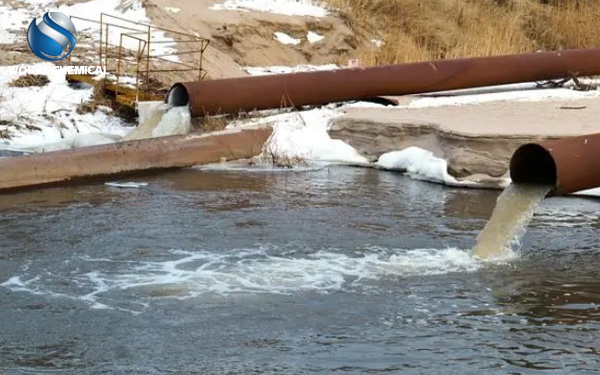
Domestic sludge dehydrating agent is a kind of chemical agent used in sludge treatment, which can effectively promote the separation of water in sludge. Generally, sludge dehydrants are divided into organic and inorganic types.

Organic sludge dehydrants are generally made of polymers or copolymers containing functional groups such as active hydroxyl group, acid group and carboxyl group, and have good flocculation and sedimentation properties. It can form relatively solid particles in the sludge, which is conducive to subsequent filtration and dehydration treatment. This type of dehydrating agent can change the physicochemical properties of the surface of the sludge particles and reduce the surface load and specific surface area of the sludge solids.
Inorganic sludge dehydrant is made of inorganic salts, which has strong condensation performance and can quickly remove the water in the sludge, but relatively speaking, it is not conducive to subsequent filtration and dehydration treatment.
The main functions of sludge dehydrant include:
1. Reduce the specific resistance of the sludge dehydration process: After the action with the sludge, the formation of fine, solid small floc, greatly reduce the specific resistance, so that water is easier to separate from the sludge.
2. To achieve rapid and continuous dewatering of sludge: to achieve solid-liquid separation, reduce the moisture content of sludge, and achieve the purpose of real volume reduction.
3. Partial replacement of inorganic flocculants: Full or partial replacement of inorganic flocculants will not increase the salt content of the filtrate and help improve the operating conditions of the sewage treatment plant.
4. Release water in sludge: It is beneficial to reduce the release of intracellular water by anaerobic reverse cell wall membrane, and then remove most of the free water, bound water, capillary water and intracellular water in biochemical sludge.
5. Reduce the volume increment of sludge: After dewatering, the volume increment of sludge is small, and the volume increase of mud cake relative to dry sludge is lower than that of traditional methods, which reduces the subsequent treatment cost and improves the treatment efficiency.
6. Optimize the difficulty of follow-up wastewater treatment: make the filter water clearer, which can reduce the difficulty of follow-up wastewater treatment.
7. In the selection of domestic sludge dehydrant, many factors need to be considered. First of all, it is necessary to understand the nature of the sludge, including its composition, water content, organic content, etc., because different sludge dehydrators may have different effects on different sludge properties. Secondly, it is necessary to consider the performance characteristics of the dehydrating agent, such as dehydration efficiency, flocculation effect, stability, etc. In addition, it is also necessary to pay attention to the environmental protection, safety and cost of sludge dewatering agents.
8. In order to achieve a better dehydration effect, it is usually necessary to combine appropriate sludge treatment equipment and processes. For example, plate and frame filter press, belt filter press, centrifuge and other equipment can be used for sludge dehydration, but their working principles and application scenarios are different.
9. Domestic sludge dehydrant plays a key role in the sludge treatment process. Through reasonable selection and use of sludge dehydrating agents, combined with appropriate equipment and technology, domestic sludge can be treated more efficiently, economically and environmentally friendly, and sludge reduction, stabilization and harmless can be achieved, contributing to environmental protection and resource utilization. At the same time, with the continuous progress of science and technology, there may be more advanced and efficient sludge dehydrating agents and treatment technologies in the future to meet the increasingly stringent environmental requirements and evolving social needs.